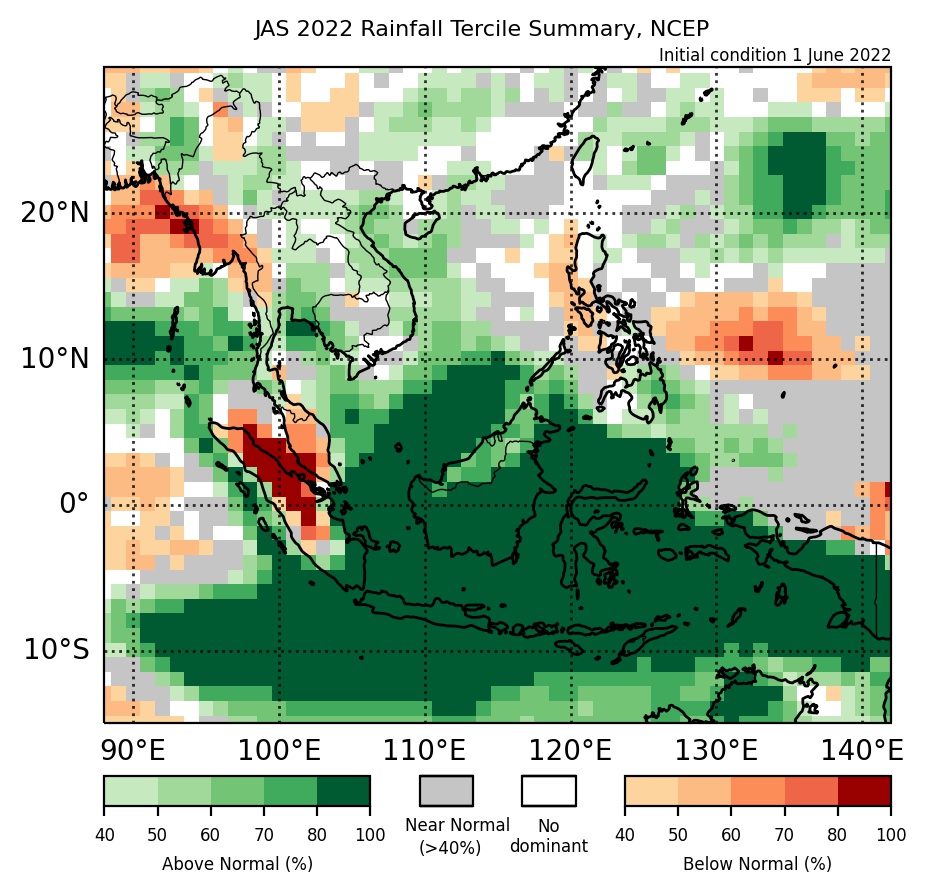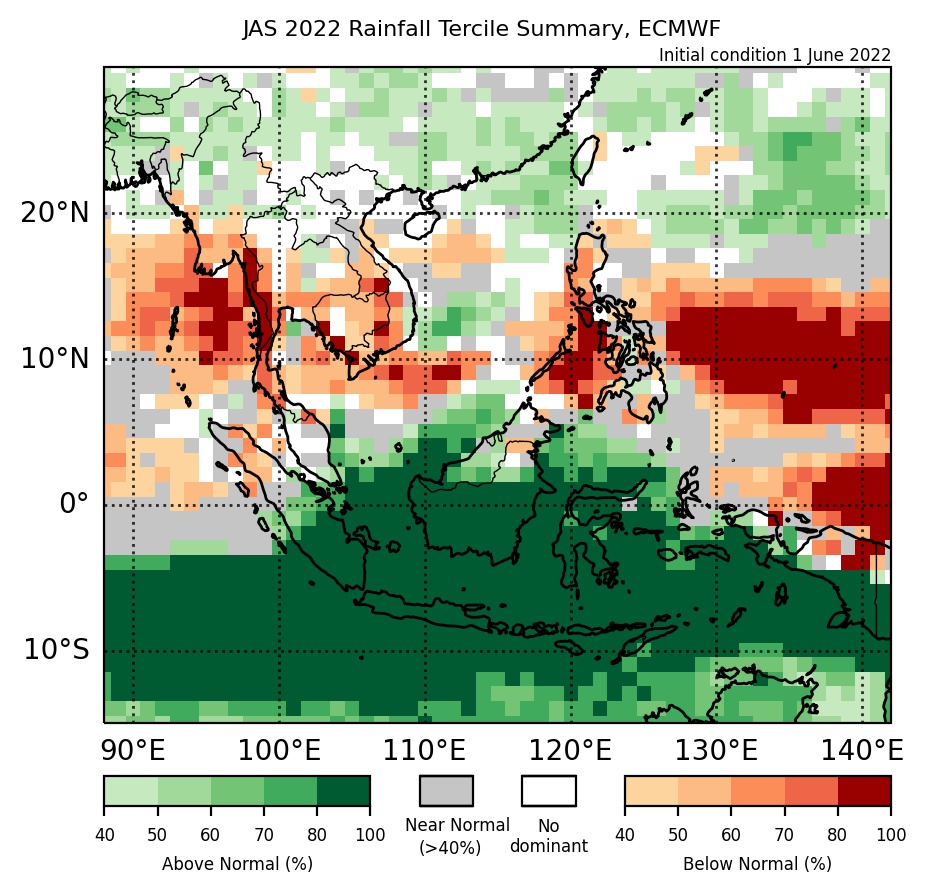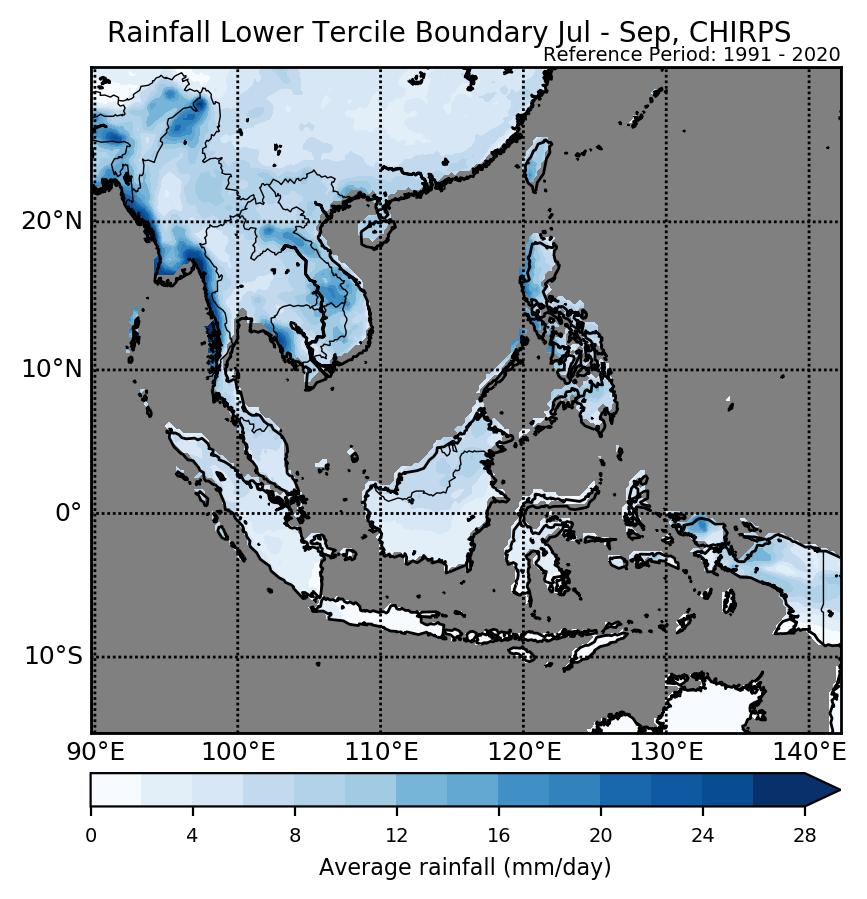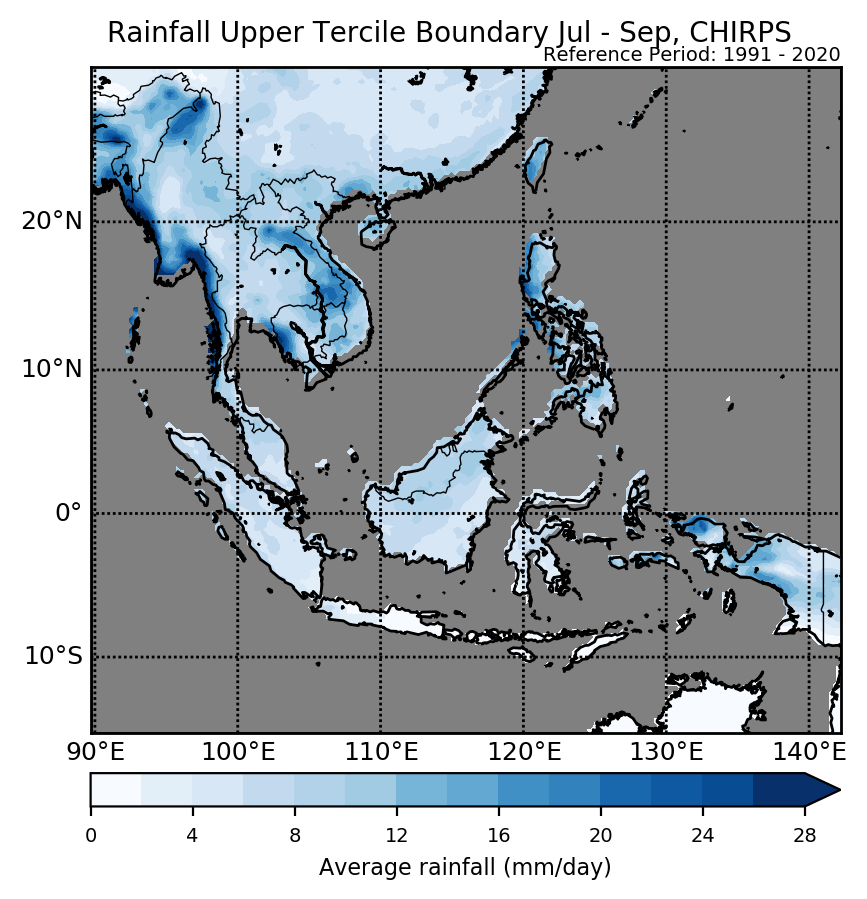Rainfall
Seasonal Rainfall Outlook: July-September 2022 (JAS)
Issued: 30 Jun 2022
For JAS 2022, models predict above-normal rainfall for much of the southern ASEAN region.
For JAS 2022, above-normal rainfall is predicted for much of the southern ASEAN region based on the multi-model ensemble (Figure 4). The exception is over the western Maritime Continent where UK Met Office model (Figure 3) predicts near- to above-normal rainfall, the ECMWF model (Figure 2) predicts a mix of below- to above-normal rainfall, and the NCEP model (Figure 1) predicts below-normal rainfall over much of the region. The models show low to moderate skill over the western Maritime Continent and moderate to good skill over the rest of the Maritime Continent.
For the northern ASEAN region, below-normal rainfall is predicted over parts of the band from 10°N to 20°N based on the multi-model ensemble (Figure 4). While all three models predict below-normal rainfall over southwestern Mainland Southeast Asia, only ECMWF and UK Met Office models predict below-normal rainfall over southeastern Mainland Southeast Asia and parts of the Philippines. However, the models’ skill is low for below-normal rainfall for this region. Elsewhere in the northern ASEAN region, near- to above-rainfall is predicted, with low model skill over the region.
For the northern ASEAN region, below-normal rainfall is predicted over parts of the band from 10°N to 20°N based on the multi-model ensemble (Figure 4). While all three models predict below-normal rainfall over southwestern Mainland Southeast Asia, only ECMWF and UK Met Office models predict below-normal rainfall over southeastern Mainland Southeast Asia and parts of the Philippines. However, the models’ skill is low for below-normal rainfall for this region. Elsewhere in the northern ASEAN region, near- to above-rainfall is predicted, with low model skill over the region.

Figure 1: Rainfall tercile summary predictions of NCEP model for JAS 2022 (contains modified Copernicus C3S information).

Figure 2: Rainfall tercile summary predictions of ECMWF model for JAS 2022 (contains modified Copernicus C3S information).

Figure 5: Average climatological rainfall's lower tercile boundary for JAS based on CHIRPS (Reference period: 1991-2020).

Figure 6: Average climatological rainfall's upper tercile boundary for JAS based on CHIRPS (Reference period: 1991-2020).
The qualitative outlook is assessed for the region in general. For specific updates on the national scale, the relevant ASEAN National Meteorological and Hydrological Services should be consulted.